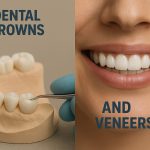For individuals struggling with persistent exhaustion and depleted energy levels, finding effective solutions can be challenging. Osteopathy has emerged as a promising approach for chronic fatigue relief London residents can access, offering a holistic pathway to recovery that addresses both physical and systemic concerns.
The Osteopathic Approach to Fatigue
Osteopathy works on the principle that the body’s systems are interconnected, and optimal health requires proper structural alignment and function. Osteopathic treatment for chronic fatigue syndrome encompasses a range of gentle manipulative techniques that aim to improve circulation, reduce muscle tension, and enhance the body’s natural healing mechanisms.
Key Benefits of Osteopathic Treatment
When addressing chronic fatigue, osteopaths focus on several crucial aspects of bodily function. The treatment approach typically includes:
- Improving lymphatic drainage to enhance immune function
- Releasing muscular tension to reduce energy expenditure
- Enhancing circulation to vital organs
- Supporting better sleep patterns through physical adjustment
- Addressing postural issues that may contribute to fatigue
The Science Behind Osteopathic Care
Research has shown that osteopathic manipulation can significantly improve energy levels and reduce fatigue symptoms through its effects on the autonomic nervous system. By working with the body’s natural rhythms and structures, osteopaths help restore balance to overworked systems and support recovery processes.
Treatment Protocols and Expectations
Each patient’s journey with chronic fatigue is unique, requiring a personalised treatment approach. During initial consultations, osteopaths conduct thorough assessments to understand the specific patterns and triggers of fatigue. This information helps create targeted treatment plans that may include:
- Gentle soft tissue manipulation
- Cranial osteopathic techniques
- Joint mobilisation
- Breathing exercises and postural advice
Lifestyle Integration and Support
The effectiveness of osteopathic treatment is often enhanced when combined with appropriate lifestyle modifications. Practitioners regularly provide guidance on:
- Activity pacing strategies
- Ergonomic improvements
- Stress management techniques
- Nutritional considerations
Building Sustainable Recovery
Recovery from chronic fatigue requires a measured and consistent approach. Osteopathic treatment helps establish a foundation for long-term wellness by addressing both immediate symptoms and underlying factors that contribute to fatigue. This comprehensive strategy ensures that improvements are sustainable and progressive.
Complementary Approaches
While osteopathy forms a central part of chronic fatigue treatment, it often works best as part of an integrated approach. Supporting therapies might include:
- Gentle exercise programmes
- Mindfulness practices
- Sleep hygiene improvements
- Dietary modifications
Monitoring Progress and Adaptation
Throughout the treatment journey, osteopaths regularly assess progress and adjust techniques as needed. This flexible approach ensures that treatment remains effective and appropriate as the patient’s condition improves. Regular monitoring also helps identify any additional support needs or necessary modifications to the treatment plan.
Moving Forward with Osteopathic Care
The journey to recovery from chronic fatigue through osteopathy is one that requires patience and commitment. However, the natural and holistic approach offered by osteopathic treatment provides a valuable pathway to improved energy levels and overall wellbeing. By addressing both structural and functional aspects of health, osteopathy continues to demonstrate its effectiveness in supporting those affected by chronic fatigue. For many individuals seeking help with chronic fatigue, osteopathy offers a gentle yet powerful approach to recovery. Through careful attention to the body’s natural healing mechanisms and the implementation of targeted therapeutic techniques, osteopaths help patients move towards renewed vitality and improved quality of life.





